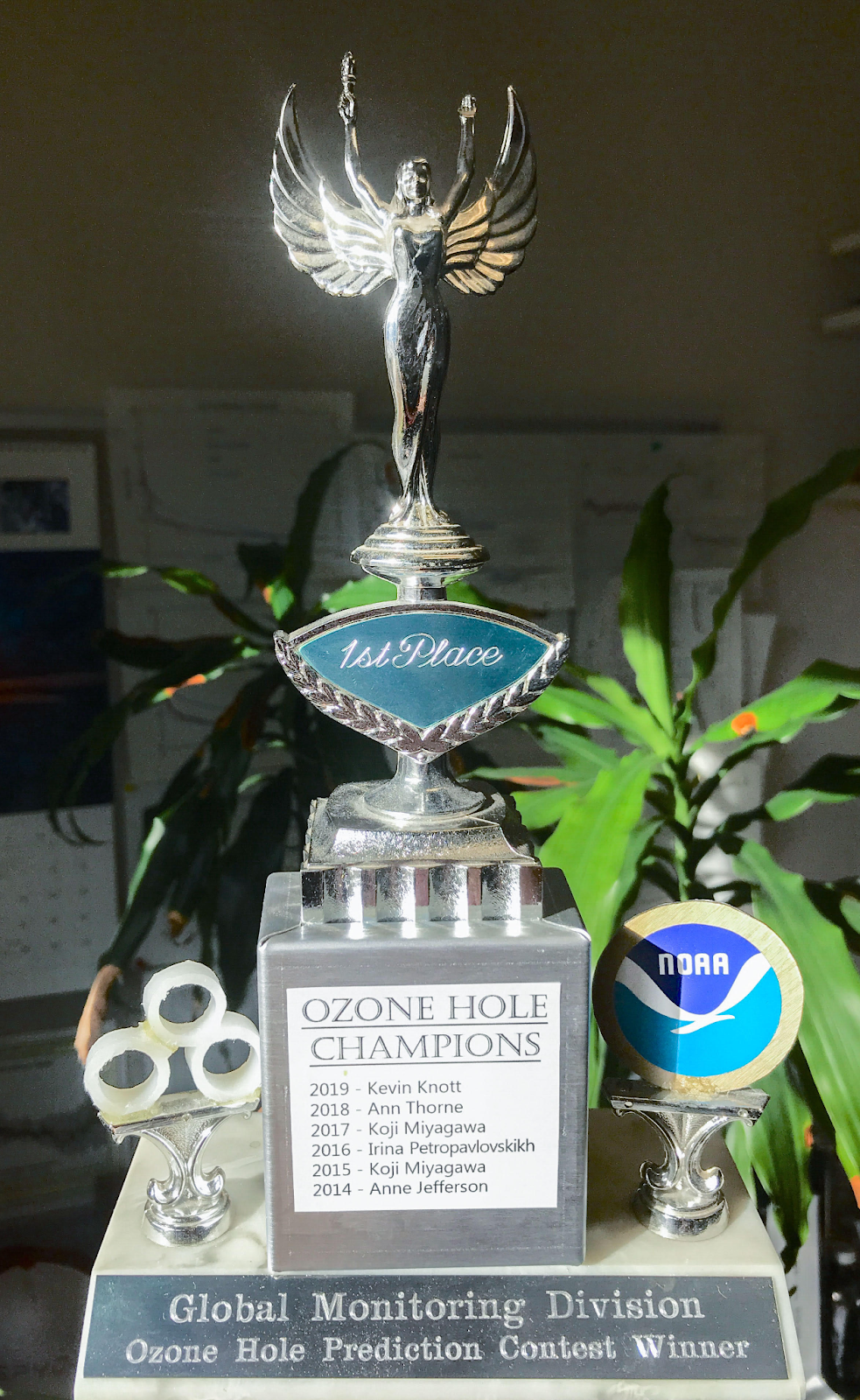A lucky guess? Learn the science of ozone depletion with NOAA and NASA!
Teaching 8th graders about Antarctic ozone hole in two and a half weeks
By Xinyi Zeng, Science Communications and Outreach Specialist at NOAA Global Monitoring Laboratory
As NOAA and NASA announced the 2021 Antarctic ozone hole condition on October 27, the 8th- and 9th-grade science classroom at Lafayette Junior/Senior High School also concluded their first science project on ozone hole prediction.
For 70+ students who started this new school year knowing little about ozone, they are now leaving the classroom with all the knowledge of what the ozone hole is like and how it forms.




The science project these students embarked on was inspired by NOAA and NASA’s long-standing Ozone Hole Prediction Contest and would not be possible without a NOAA educational opportunity - the NOAA Teacher at Sea program.
David Amidon, the science teacher at Lafayette Junior/Senior High School and a 2017 alumnus of the NOAA Teacher at Sea program, was able to continue his connection with NOAA and developed this science project leveraging various resources from NOAA and NASA.
“My students first learned the topic over two and a half weeks. Then, they made a claim on when the ozone minimum would occur at what level, providing both scientific evidence and reasoning,” said Amidon.

Making a claim might be easy, but backing it with scientific evidence and reasoning requires a lot more hard work.
“My biggest struggle was remembering all the information because there was so much - it kind of got a little overwhelming at parts,” said one of Amidon’s students. “But my biggest win was knowing what the ozone hole is like and how it forms. I think that was a big accomplishment because there are so many parts that go into it. I was very happy that I remembered everything.”
A science project inspired by NOAA and NASA
In 2018, Amidon saw a Facebook post about the Ozone Hole Prediction Contest from NOAA Corps Officer Lieutenant Commander (LCDR) Cherisa Friedlander, who served as his contact aboard the NOAA Research Vessel Reuben Lasker in the Teacher at Sea program. LCDR Friedlander then moved to serve as the Station Chief at NOAA’s South Pole Atmospheric Research Observatory in 2018.
NOAA Global Monitoring Laboratory started the contest about a decade ago to engage staff to follow the development of the ozone hole. Participants would enter their guesses on total column concentrations and the date of the ozone minimum with a winner claimed in October each year. NASA also has a similar internal contest on the size of the ozone hole each year.

Along the way of creating this science project, Amidon received lots of help from NOAA and NASA.
“NOAA engineer Sabrina Shemet helped me a lot during the first year,” Amidon said. LCDR Friedlander and Shemet were NOAA’s first all-female winter-over crew. “My classes were even able to speak with LCDR Friedlander and Sabrina that year.”
Since 2018, Amidon has done the science project with his students several times. NASA’s Solar System Ambassador Program has provided posters and stickers to support Amidon running this experience.
The version Amidon used this year underwent significant reworks, further breaking down the content.
“Students are coming back to school after a whole year of virtual learning and I want to give them a refreshing experience at the start of the school year,” Amidon said. “The timing of the Antarctic ozone depletion fits perfectly.”
Reaching out to NOAA Global Monitoring Laboratory in September, Amidon got help from Peter Effertz and Patrick Cullis to navigate through NOAA resources on ozone research and the South Pole ozone hole.
Practicing science in 8 classes, and carrying it on
Spanning two and a half weeks, the science project covers both introductory topics like “what is the ozone layer” and “how is ozone measured” and hand-on practices, such as interpreting NOAA’s ozone vertical profiles and analyzing data patterns using an Excel spreadsheet.
Every year, ozone depletion in Antarctica starts when the sun rises. Sunlight activates chlorine from manmade chlorofluorocarbons, or CFCs, beginning a catalytic reaction in which a single chlorine molecule will destroy thousands of ozone molecules.
The 8-part science project ended on September 24, 2021, when students submitted their claims for this year’s ozone minimum. Yet, the learning didn’t stop here.
Throughout the season, NOAA’s South Pole Observatory launches weather balloons carrying ozone-measuring sondes that directly sample ozone levels vertically through the atmosphere. Once the sun rises, measurements are also made with a ground-based instrument called a Dobson spectrophotometer.

Thus, for the next month, Amidon continued to spend some time each week to review readings of total column ozone and vertical ozonesonde profiles on the NOAA website.
“We have a prediction calendar marking everyone’s guess,” said Amidon. “As days go by, we know who is likely to be the winner.”
The destruction reaction often peaks around late September to early October reaching the minimum level of ozone and the largest depletion extent.
On October 27, NOAA and NASA made the official announcement on the 2021 Antarctic ozone hole condition. With that, Amidon was also able to announce to his class the final winner. The class then spent 10-15 minutes rewriting their claims with evidence and reasoning.
Among 70+ students who entered their claims on the date and concentration of the Antarctic ozone minimum this year, two claimed the winning title. Their prediction, 102 Dobson Units on October 8, was just one day off from the actual minimum — 102 Dobson Units on October 7.

Even though the process was quite challenging, students are leaving the classroom with satisfaction.
“For some reason, my brain just refused to process any information about Polar stratospheric clouds at first, so making my model with that part was kind of difficult. But, this also meant that my biggest win was figuring out how those stratospheric clouds worked because I couldn't do it for like two days.” said a student.
